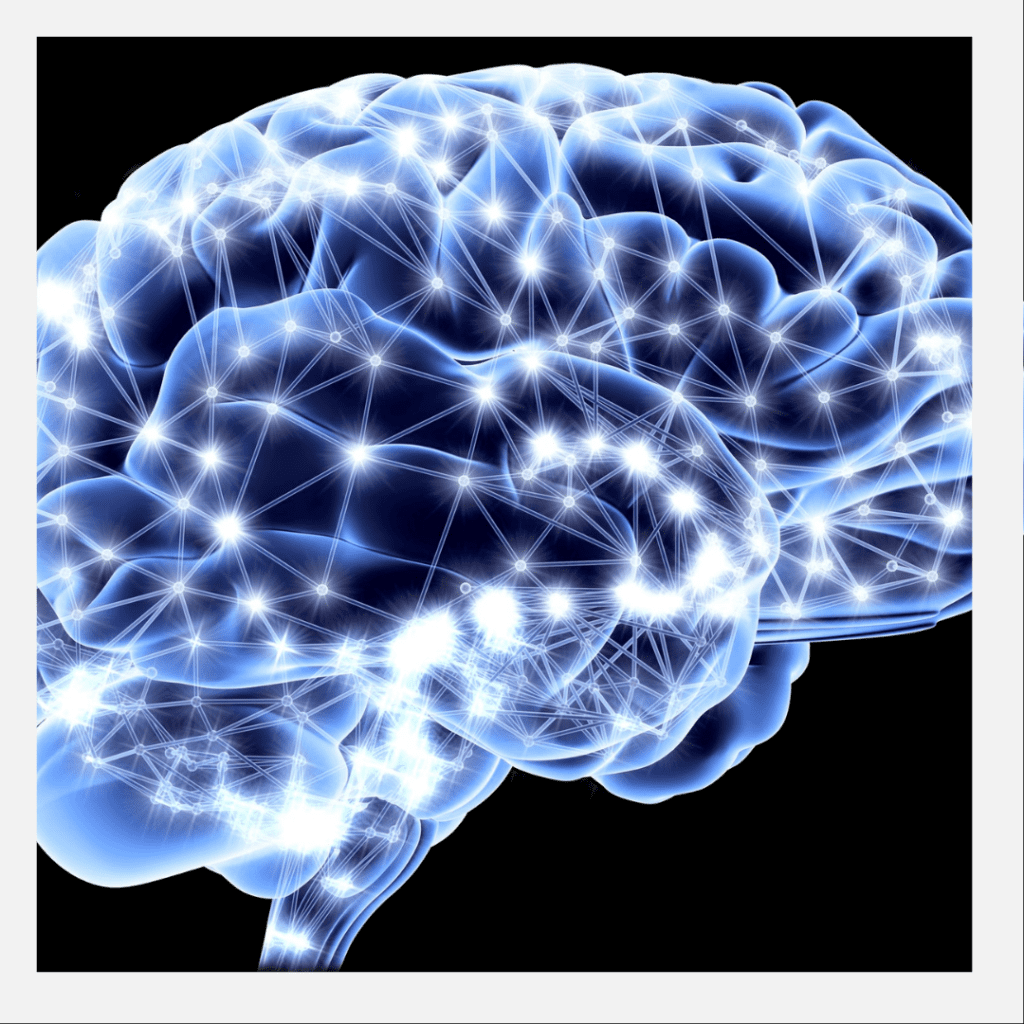As we go through therapy, Adam and I understand that it is on us to pursue healing and grow out of our old coping mechanisms that no longer serve us. To do this, we are trying to engage in more mindfulness and reflection. Who knew that these strategies could also benefit the brain’s structure?
Self-directed neuroplasticity is the consistent use of cognitive training, motivation, attention, and potential medicines (depending on the issue) to harness the remarkable power of the human mind to shape itself.
For those facing addictions, mental illness, neurological challenges, or other cognitive deficits, self-directed neuroplasticity offers hope and empowerment.
Everyone can benefit from self-directed neuroplasticity because it empowers individuals to grow personally, adapt, overcome limited beliefs, and unlock potential.
The reorganization and adaptation of the brain’s structure and functions is a phenomenon known as neuroplasticity.
The brain’s capacity to change in response to experiences can impact an individual’s cognitive functions. The concept signifies that brains are not static or wholly hard-wired.
Age is not a restriction when it comes to this phenomenon, meaning transformation can occur in conditions ranging from CNS injury to neurodegenerative diseases to slow disease progression.
Mindfulness practices and cognitive training can initiate significant modifications in neural connections. The brain is a muscle that we need to exercise constantly. Mental training leads to a more robust prefrontal cortex and a calmer amygdala, reflecting improved mental health and synaptic plasticity (find support).
Principles of Neuroplasticity
Below are seven principles that will help provide context on how neuroplasticity functions:
- Use it or Lose it: Neural circuits that are frequently used become more robust and more efficient, while those that are rarely used may weaken or disappear over time.
- Neurons that Fire Together Wire Together (Hebbian Principle): Neurons can form stronger connections and neural pathways when repeatedly activated simultaneously.
- Experience-Dependence: Experiences, both internal (such as thoughts and emotions) and external (such as sensory input and environmental stimuli), drive the brain’s ability to adapt to the environment.
- Present Throughout Life: Neuroplasticity is critical during infancy and childhood but persists throughout life.
- Different Types: There is structural plasticity (changes in the physical structure of neurons and synapses) and functional plasticity (changes in the function and organization of neural networks).
- Impacted by Attention, Emotion, and Motivation: If these factors are high, they strengthen synaptic connections to promote learning and memory formation.
- Can Be Enhanced or Impeded: Novelty, challenge, positive reinforcement, and enriched environments enhance plasticity. Stress, trauma, and neurodegenerative conditions can hinder plasticity.

Strategies for Self-Directed Neuroplasticity
Finding the proper technique for self-directed neuroplasticity might seem daunting, but it is the key to improving your mind and mental health. Below are some options:
- Set Clear Goals: Specific goals include improving cognitive function, overcoming a fear, or developing a new skill. Clarity for why you are doing this is essential.
- Take Care of Your Physical Health: Consistent exercise (especially yoga), adequate sleep, and a balanced diet are closely linked to brain function and neuroplasticity.
- Breathing Exercises: Regulates the nervous system and lays the groundwork for more advanced practices.
- Practice Mindfulness Meditation: By cultivating an awareness of your thoughts, emotions, and sensations, you can learn to regulate your attention and emotions. Scientifically, this practice promotes a robust prefrontal cortex, shrinks the amygdala, and increases gray matter and cortical thickness – all helpful for regulating the brain.
- Engage in Cognitive Training: Puzzles, brain games, or learning a new skill challenges the brain and stimulates neuroplasticity.
- Visualize Success and Rehearse Mentally: Visualizing the desired outcomes in vivid detail, including sensory experiences and emotions associated with success, can help reinforce neural pathways.
- Learn Continuously: Engage in lifelong learning by pursuing activities that stimulate your mind and challenge your existing knowledge and skills. Continuous learning promotes neuroplasticity and cognitive flexibility.
- Challenge Negative Thoughts: Challenge and reframe negative thoughts and beliefs into positive and adaptive ones for cognitive restructuring of self-limiting beliefs.
- Embrace Novelty: New experiences encourage the brain to adapt and form new connections, promoting growth and learning.
- Seek Social Support and Feedback: Surround yourself with supportive individuals who can provide feedback, encouragement, and accountability to enhance motivation and reinforce positive changes in behavior.
To execute the above strategies:
- Commit to a daily schedule to foster a deeper connection with your present experiences.
- Explore these methods to discover which suits your lifestyle and preferences.
- Regularly reflect on the changes you’re seeing in your life to motivate you to continue your journey on mental wellness.

Things to Consider
While self-directed neuroplasticity presents vast potential for cognitive transformation, challenges still exist.
Consistency is essential but can be a daunting commitment, especially with the daily grind of life. Activities that are chosen must align with personal goals.
The risk of reinforcing negative patterns inadvertently is a genuine concern since neuroplasticity does not discriminate between beneficial and harmful changes. This issue underscores the need for well-informed strategies that ensure the brain’s adaptations serve one’s overall well-being and do not harm it.
Mindful Tools and Resources
To master self-directed neuroplasticity, these tools are designed to enhance mental fitness, strengthen neural connections, increase gray matter, and optimize the mind for better mental health.
- Apps: Headspace and Calm provide guided sessions on improving mental fitness through mindfulness practices.
- Websites: The Greater Good Science Center (GGSC) at UC Berkeley features articles and courses on self-directed neuroplasticity and its implications for mental health. PsychCentral offers many articles on neural change, synaptic plasticity, and brain optimization procedures.
Your Brain, Your Sculpture: Shaping the Mind for a Better Tomorrow
The pursuit of optimizing the mind through self-directed neuroplasticity resonates with the universal aspiration for better mental health, bringing to light the profound impact of mindfulness on brain structure and overall mental well-being.
Your journey is a testament to the enduring truth that the mind, in its essence, can be sculpted, reshaped, and improved. Self-directed neuroplasticity is an invitation to embrace the responsibility and the power to mold your mental landscape for a brighter, healthier tomorrow.
Have you Tried Self-directed Neuroplasticity?
Please drop us a comment below. If you want to learn more about certain trauma-related challenges like complex PTSD, check out our article here. If you want to know about repressed trauma, check out this article. Self-directed neuroplasticity can help with these symptoms.
Disclaimer: All content and information on this website including our recipes and blog articles is for informational and educational purposes only and does not constitute medical, psychological, or health advice (for that please always seek the help of a professional in these areas). We do not warrant that the information presented herein is free of any errors or omissions although we do our best to provide information backed by research.

